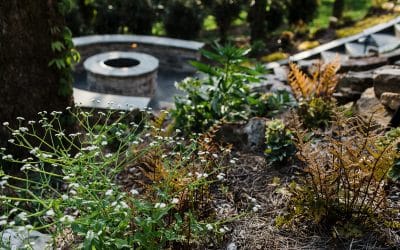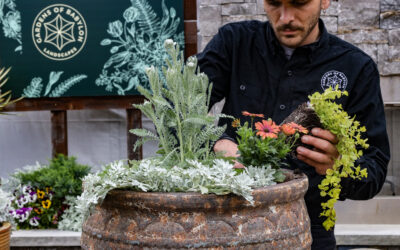The pollination efforts of bees are behind one of every three bites that typical American eats. That accounts for about 15 billion dollars a year in US crop services. Here are 5 steps you can take to help local pollinators!
Five pollinator friendly steps home gardeners can take:
1) Eliminate invasive plants. Most of these are aggressive, non-native species that aren’t very attractive to pollinators anyway, but they are the biggest threat because they elbow out natives that are of high pollinator value.
2) Plant in clusters. Diversity is important but it’s also helpful to plant in floral clumps at least five plants per clump whether shrubs, perennials, annuals instead of this one here, one there, one there. Clusters are easier for pollinators to find and offer a bigger supply of pollen.
3) Allow some cosmetic or temporary damage on some of your plants. This is a sign that caterpillars may be munching on some of these pollinator friendly plants! The leaves break down in the landscape and become a kind of shelter for insect eggs.
4) Give pollinators a water source. Bird baths or water features are two good ways to help with this. Sallow puddles are excellent if you refresh your water every now and again to avoid any kind of mosquito collection and keep the pollinators well hydrated.
5) Eliminate or reduce chemical applications around your landscape or garden or try to choose natural pesticides when you have to apply around your property. If you do have to apply, choose to apply later in the evening when the sun has gone down. These are the times when pollinators aren’t active so it gives a chance for the treatments to dry before the next day.
Plants to add that help bees:
Butterfly weed, yarrow, echinacea or coneflower, catmint, lavender, agastache, butterfly bush





0 Comments